Dutch Afsluitdijk project
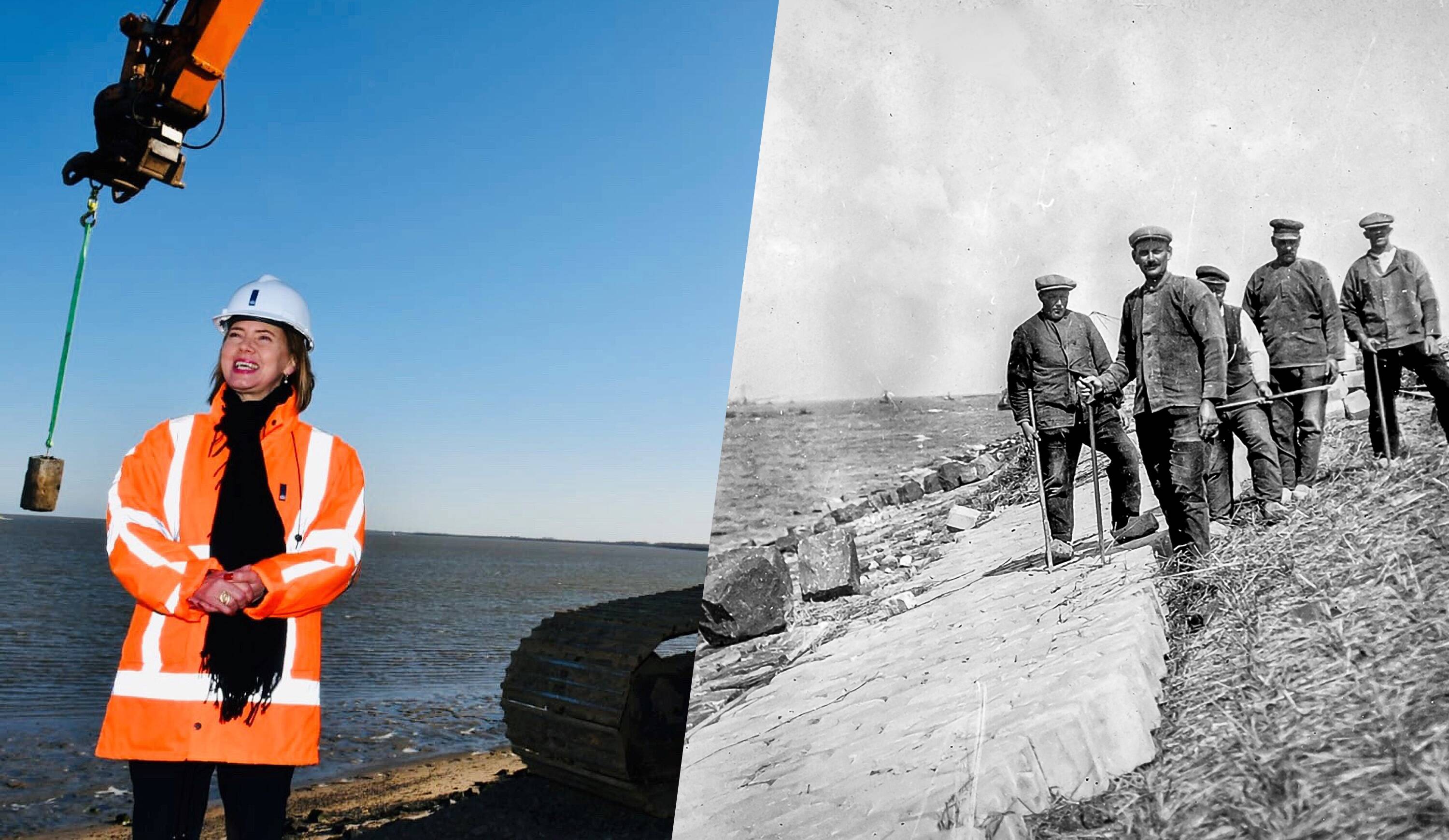
Can
history
shape the
future?
What if you were to look at an impressive project being carried out today through the eyes of history. Are there similarities? Or has progress made the past almost unrecognisable?

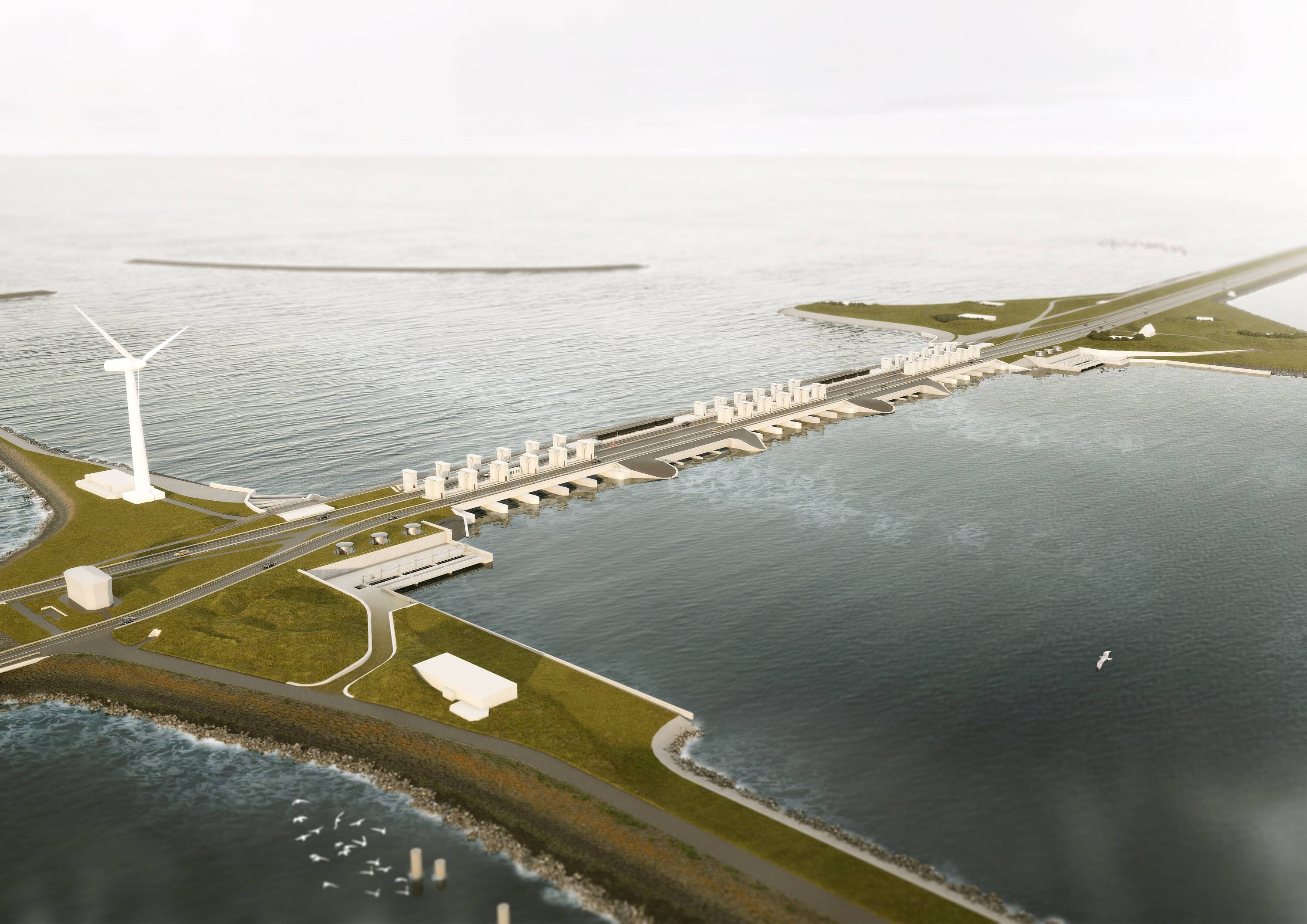
Can historyshape the future?
Let’s take a look at the Dutch Afsluitdijk project and compare our past and present contributions.
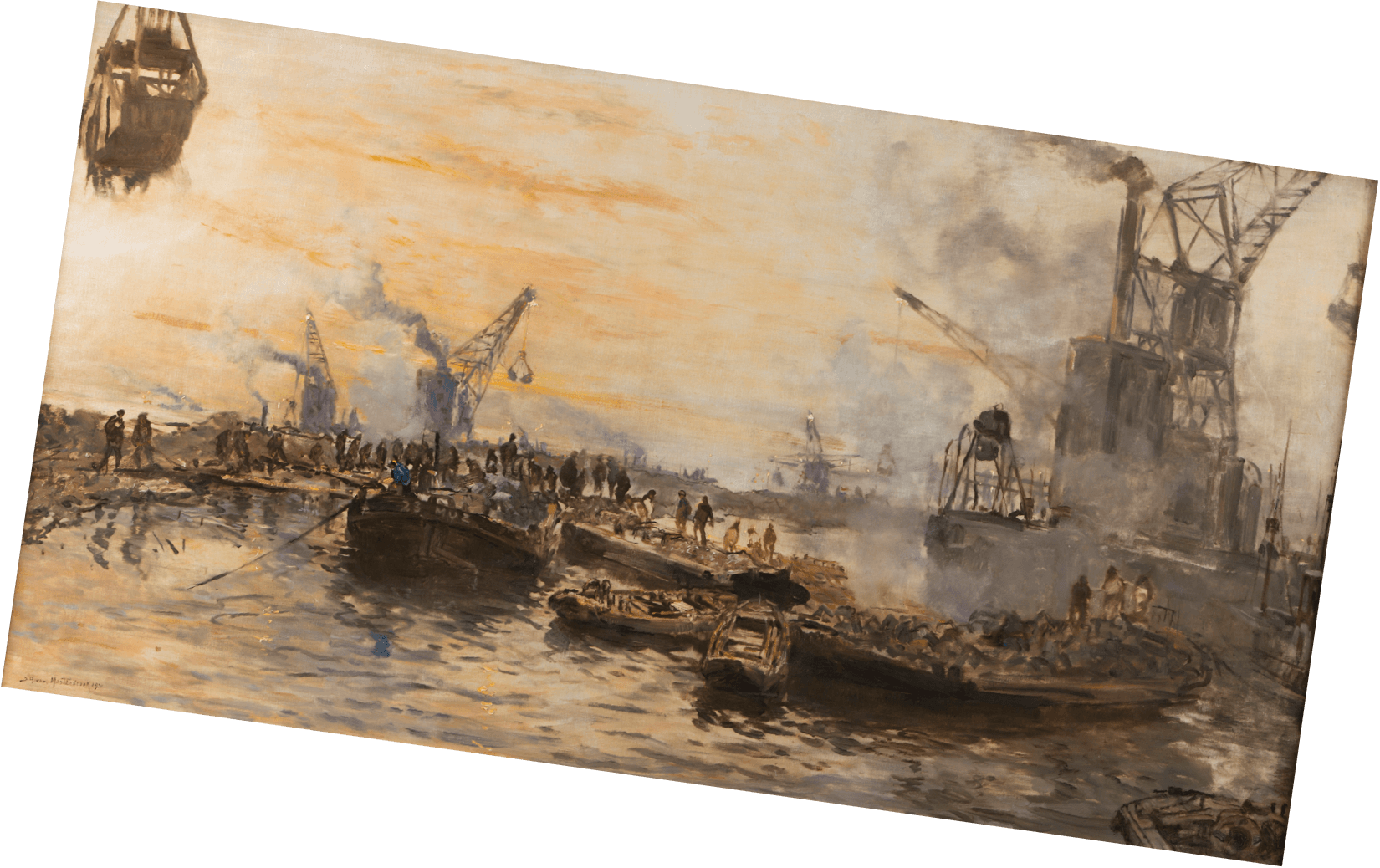
Stewardship
Stewardship is one of
Van Oord’s leading principles.
Oil painting by J.H. van Mastenbroek –Van Oord collection


Vision and leadership


Today’s challenges are different from those of the past.
Under the inspired leadership of the Minister of Infrastructure and Water Management, the dam will be improved according to contemporary standards.
Who was the visionary, who drove the construction of the Afsluitdijk, and why was it built? This video tells you all about this iconic infrastructure project, carried out almost a hundred years ago.

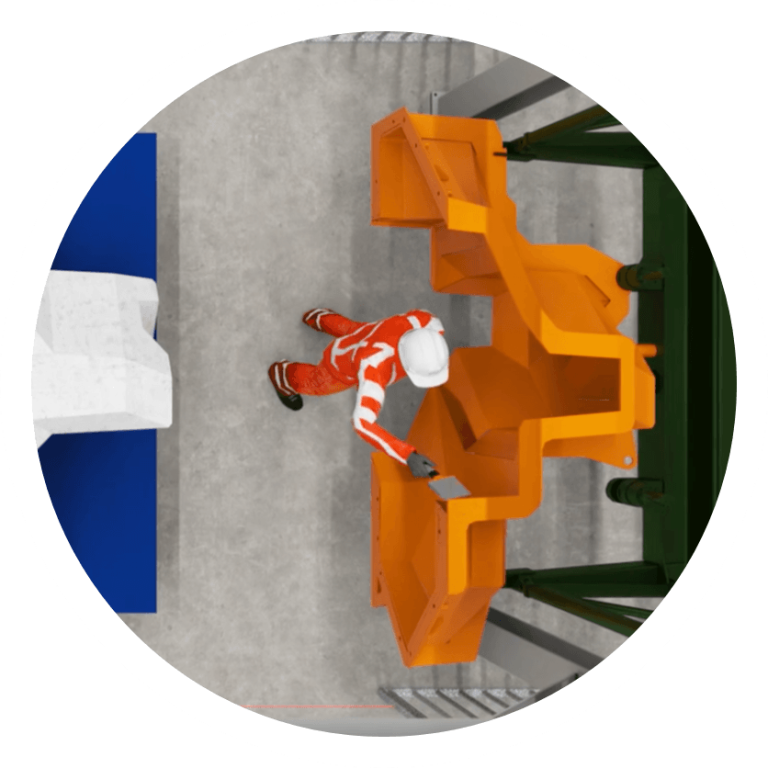
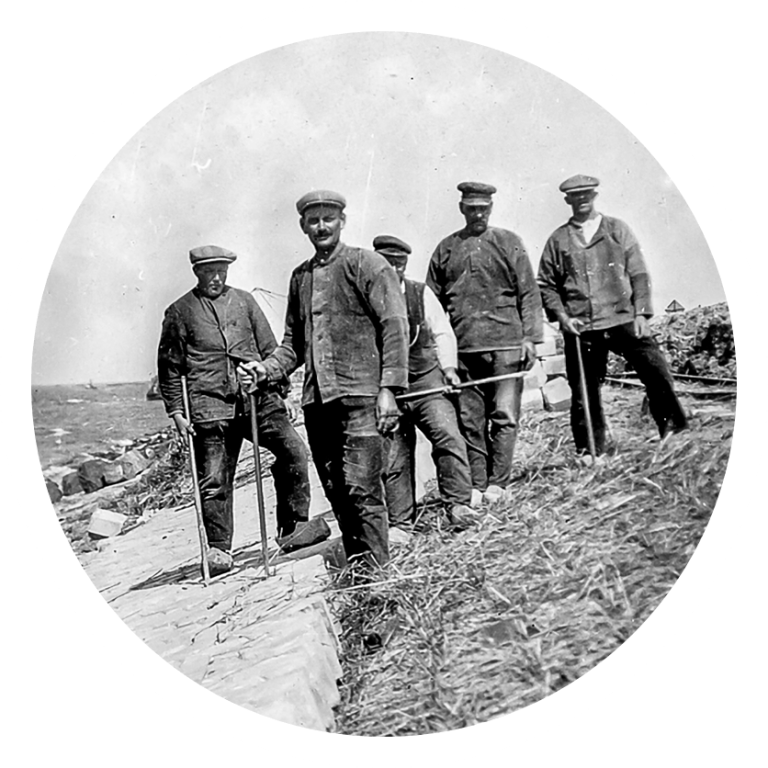
Stepping stone of ingenuity


A new revetment will be constructed on top of the current basalt stones protecting the dam, consisting of Levvel-blocs. These innovative symmetrical blocks weigh 6,500 kilogrammes each and mitigate the effects of waves on the dam. A fully automated Levvel-bloc factory opened in 2019 that produces around 100 blocks per day. Van Oord’s special crane vessel installs the blocks from the water. At an output of 35 metres per day, it will take the vessel 30 months to finish the job.
The ‘old school’ approach to reinforcement was quite labour-intensive. Imagine stones weighing up to 150 kilogrammes put into place by hand. The men worked in a row from top to bottom with their backs to the slope. They stood in front of their work with their feet in the right position. They rolled and turned the stones to the designated area.

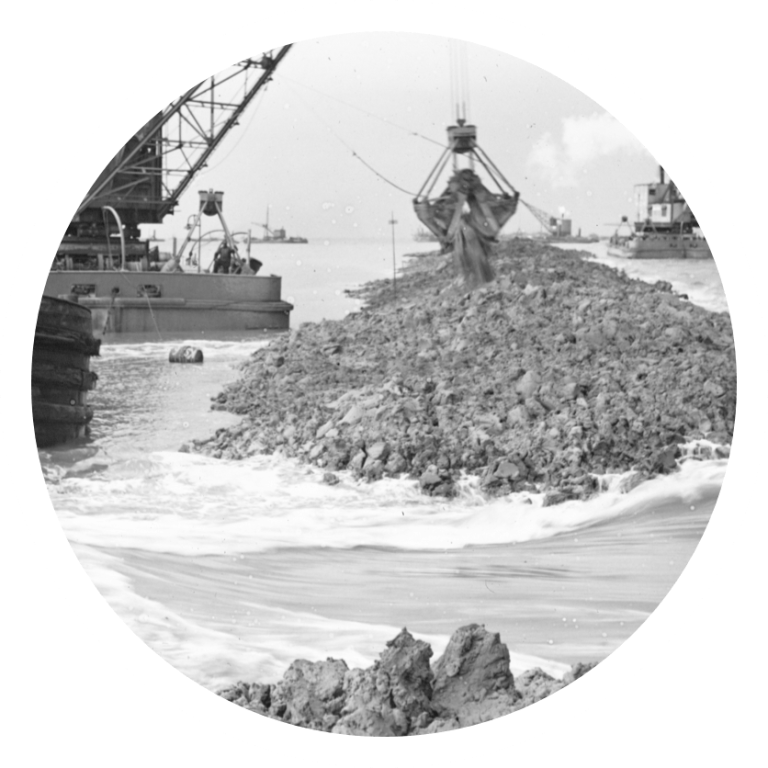
Closing the gap


Today we face other challenges, especially the one of striking the right balance between flood safety, nature and sustainability. Once the job is finished, we will hand the Afsluitdijk over to the next generation, in keeping with our principle of stewardship.
After the final gap was closed, the Afsluitdijk was finished. The workers had to overcome the challenges of nature and technology to deliver an infrastructure legacy for generations to come.

Dutch Afsluitdijk project

Can
history
shape the
future?
What if you were to look at an impressive project being carried out today through the eyes of history. Are there similarities? Or has progress made the past almost unrecognisable?
Stewardship

Stewardship is one of
Van Oord’s leading principles.
Stewardship is one of Van Oord’s leading principles. It also applies to the history of marine engineering. CEO Pieter van Oord likes to reference our corporate history because it is the foundation of our future. Under the motto We built it (1927 – 1932) and we’re strengthening it (2018 – 2022), the spotlight is currently on the Dutch Afsluitdijk, one of the most challenging dams of its time and an example of today’s sustainable ingenuity.
Closing the gap
Vision and leadership
Stepping stone of ingenuity
Can historyshape the future?
Let’s take a look at the Dutch Afsluitdijk project and compare our past and present contributions.
Today we face other challenges, especially the one of striking the right balance between flood safety, nature and sustainability. Once the job is finished, we will hand the Afsluitdijk over to the next generation, in keeping with our principle of stewardship.
A new revetment will be constructed on top of the current basalt stones protecting the dam, consisting of Levvel-blocs. These innovative symmetrical blocks weigh 6,500 kilogrammes each and mitigate the effects of waves on the dam. A fully automated Levvel-bloc factory opened in 2019 that produces around 100 blocks per day. Van Oord’s special crane vessel installs the blocks from the water. At an output of 35 metres per day, it will take the vessel 30 months to finish the job.
Today’s challenges are different from those of the past.
Under the inspired leadership of the Minister of Infrastructure and Water Management, the dam will be improved according to contemporary standards.
After the final gap was closed, the Afsluitdijk was finished. The workers had to overcome the challenges of nature and technology to deliver an infrastructure legacy for generations to come.
The ‘old school’ approach to reinforcement was quite labour-intensive. Imagine stones weighing up to 150 kilogrammes put into place by hand. The men worked in a row from top to bottom with their backs to the slope. They stood in front of their work with their feet in the right position. They rolled and turned the stones to the designated area.
Who was the visionary, who drove the construction of the Afsluitdijk, and why was it built? This video tells you all about this iconic infrastructure project, carried out almost a hundred years ago.
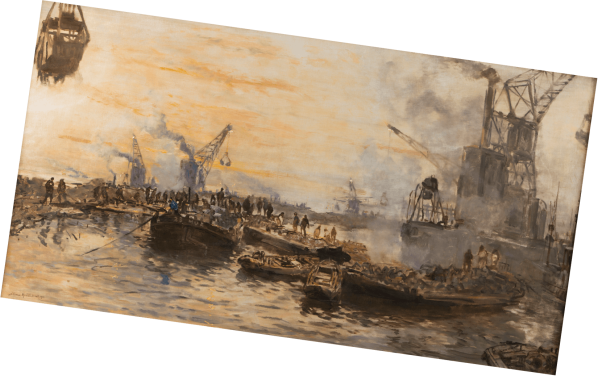
Oil painting by J.H. van Mastenbroek –
Van Oord collection










